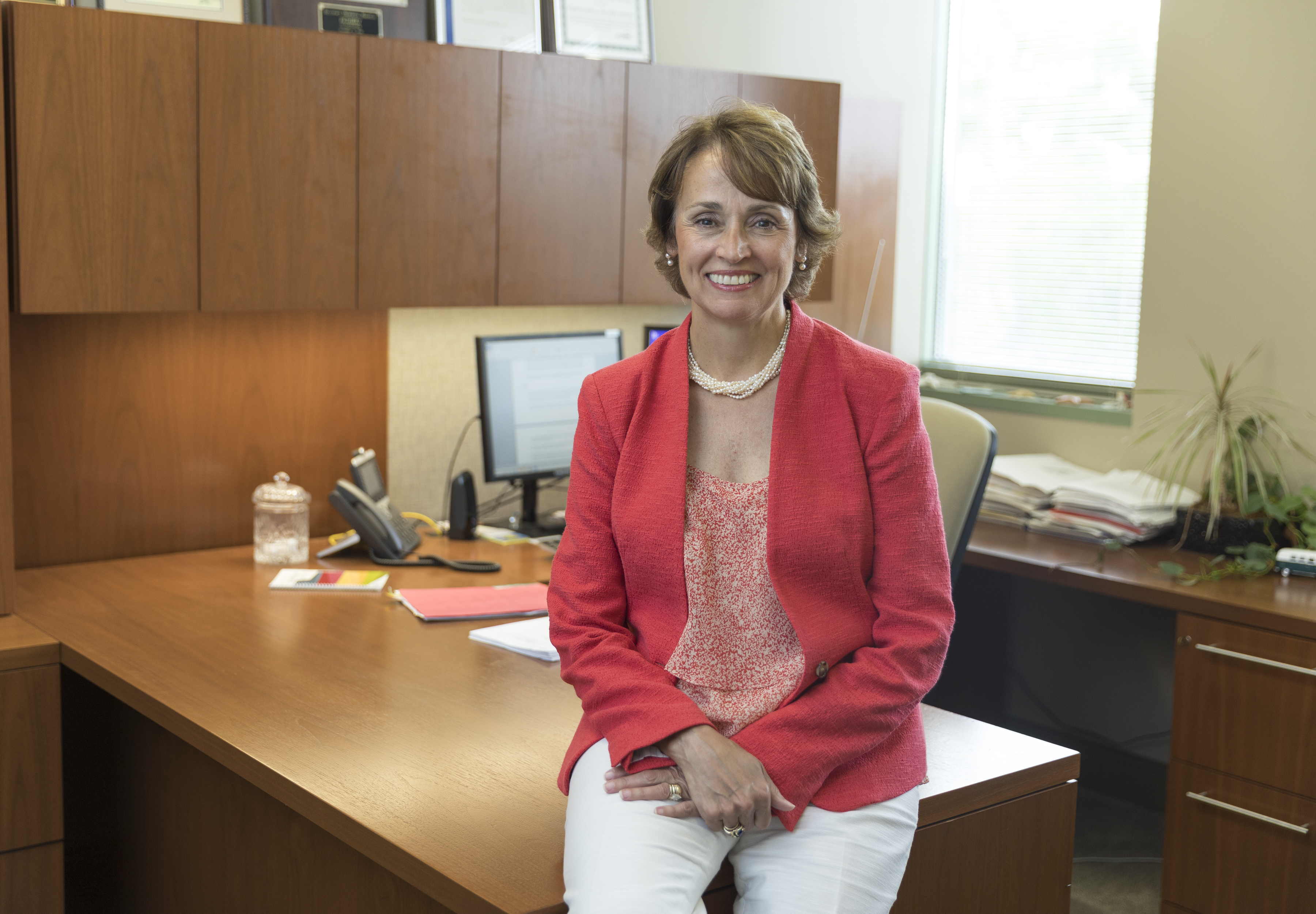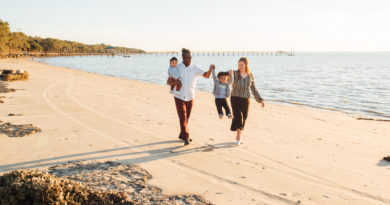Swimming with PHIL NEUBIG
Of all the accomplishments, events and talents Phil Neubig is known for, the least of which is probably his swimming. And he has one huge box of ribbons won for his swimming, so that just gives you a brief idea of the scope of his life.The next time Phil competes will be after his 85th birthday. He joined the Parris Island Masters swim team in 1994. “Now,” he says, “all I do is muscle my way through the water. One of the reasons I joined the swim team was, that as a retired Marine, I was able to get on Parris Island.” Did I mention that Phil has a lively sense of humor? The other reasons he joined the swim team were that he wanted to learn to swim doing strokes other than the dog paddle; an athlete all his life, he enjoys the exercise. Although he grew up near the water in Louisiana, he didn’t learn to swim as a child. “I was born in the middle of the depression; my parents believed that you never took chances. Two of my friends drowned in the Mississippi in eddy currents, so my parents wouldn’t let us swim. I would sneak behind the levee and dog paddle around, I never learned anything else until I joined the swim team.”
As part of his training to be a fighter pilot, in 1952 he had to jump in the water in his flight suit and swim a mile from the plane to land. This effort must have empowered Phil in some way because in 1954 “I brought Marianne (my bride-to-be) home to meet my folks. We went to New Orleans with my mother and sister on the ferry boat. On the way back, we missed the ferry so, in order to impress Marianne, I took my clothes off, jumped into the Mississippi and dog paddled and side-stroked my way across. The tug boats were trying to rescue me, my mother pulled out her rosary and started praying, which was the only reason I made it. The current took me a mile downstream so I had to walk back on top of the levee in my undershorts.” Asked if she was impressed, Marianne countered, “I had no idea what he was doing!”
Having only started swimming in 1994, Phil swam the mile in 46:34.38 in 1995. Perseverance paid off and in 2001, he swam that mile in 38:22.23. He still swims 3 days a week in the pool at Beaufort High. He was won 13 South Carolina state records. How? “I’m the only 84 year old who swims 1 mile, 1/4 mile and 400 yards. All the older guys swim shorter distances.” He’s been to the Nationals in Palm Gardens, FL. In 2013 he swam in the Pan Am Masters tournament in Sarasota, FL. And, he went with his son, Mike, for an open water 2 mile swim around the island of Fiji in 2005. Phil swims 12 races in every meet – 10 individual, and 1 or 2 relays. His system is that when he practices, in his first lap he takes only 3 breaths, in the second lap – 2 breaths, and in the third lap – none. “I’m the only guy not huffing and puffing. In flight training, I set three physical fitness records. I’ve torn each of my rotator cuffs twice while swimming. I started swimming when I couldn’t run anymore.”
And run he loved to do. As a pilot for 34 years for United Airlines, Phil would run when on layovers. He had a particular affinity for running through the more questionable parts of town where he might find pawn and junk shops and score an antique tool for his collection. He eventually acquired over 3,000 tools, but on his quest he found something that turned out to be quite interesting and have a much more residual effect. One night, in one of those pawnshops, Phil spied a 1929 geological survey map of Ontario, Canada hanging on the wall. It showed the portages that the hunters and trappers and fur traders used in the 1800’s. Phil remembered his 6 or 7th grade history and bought that map without even a second thought. The map showed a road that went the farthest north, to Pickle Lake, which was on an Indian reservation. Phil decided he would follow that map. So the next year, he put his 4 boys, ages 4 – 11, in the car and drove to Minnesota where they packed tents, got in canoes, and spent two weeks learning about camping. Since synchronicity always plays a part somewhere in our lives, Phil went to a Marathon Oil Co. annual meeting, the only stockholders meeting he ever attended, where he met the CEO who was a big canoeist. This man went into Canada by sea plane where he was dropped off and picked up later at the intended destination. Phil was intrigued and got a copy of his canoe log and the next summer he took his two oldest boys and did a similar trip. The summer after that, in 1972, all four boys accompanied Phil and they drove to Pickle Lake in Ontario, Canada, which was at the end of the road. Phil was thrilled and amazed to find a Hudson’s Bay Company Store on the reservation; they bought a more detailed map along with some supplies and a 4 stripe blanket, which Phil still has. (Hudson’s Bay Co. has been famous for it’s point blankets for over two centuries.) “We canoed 95 miles roundtrip, we crossed 15 portages where we saw nothing and no one as the Indians no longer used canoes in favor of boats with motors. We learned the territory as we went, we shot rapids and falls. The water was 40 – 50 degrees; I had heard that the body adapts to cold so every day we swam. The first day we could only go about 100 yards but by the end of the trip, we could swim in that cold water for an hour; the body develops a thin layer of fat under the skin for insulation. Some days when the outside temperature was hovering around 30, that water actually felt warm! We repeated this trip 14 times until my youngest son was 18. We never saw a single person and we never carried a radio. If we had needed help, we would have had to have relied upon ourselves.”
Ten years before Phil was due to retire from United Airlines, he and Marianne drove around the country to see where they would like to live. “We stumbled upon Beaufort; it was the heart of the Marine Corps. We met Tony and Blanche Trumps and they started showing us property. In 1981, we found this lot where we wanted to build a house.” (See the story about the building of Phil and Marianne’s 20+ year journey to build their amazing house.)
If you ever meet Phil, sit down and have a chat. Have him tell you about that fateful day in 1958 when he kinda, sorta, borrowed a F9F6 Cougar fighter plane to take on a “training mission” from Illinois to Alabama where his wife was planning the funerals of her father and grandmother and almost, her husband. Have him explain that the weather turned bad and he was enveloped in a thunderstorm and he lost power to that one important instrument – the gyro horizon. He didn’t know if he was right-side up or upside-down when he went into an inverted spin and he had to make a decision, because at 760 mph, or mach 1, which is the speed of sound, when you are traveling a mile every 5 seconds, the next ten seconds for him represented eternity. With his altimeter unwinding as fast as his speed was building up, he knew he had to punch out and went through the canopy. Only he was taller than the spikes on the back of the ejection seat designed to break the canopy so his head hit first and his hard hat split in two, kept together by the chin strap. Ask him what was like to eject through the canopy of the plane where the “D” ring on his parachute and the toggle on his Mae West life vest got caught on the broken Plexiglas so his chute opened immediately which allowed his seat to tear through his parachute and rip it to smithereens, and he was hanging with a rope around his neck from the life vest while he descended 10,000 feet, starting at the speed of sound, until he reached the ground with a parachute that looked like something from your grandmother’s tattered rag bag. Ask him how it feels to be the only person to have survived something like that. He’s a great story teller – he will regale you with all the sordid details, and you will be amazed at his resilience, his humor, his drive, his competence, and his amazing bonhomie.
Story by MARY ELLEN THOMPSON
Photography by PAUL NURNBERG


